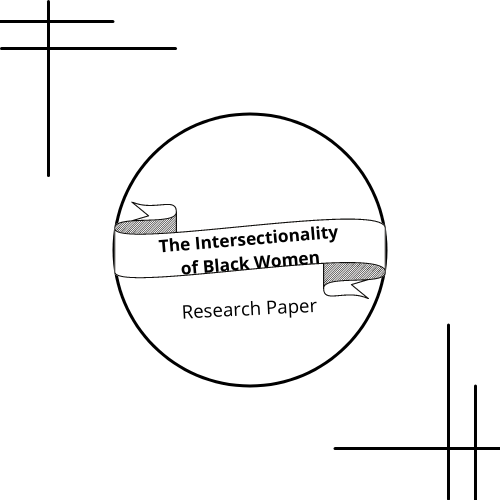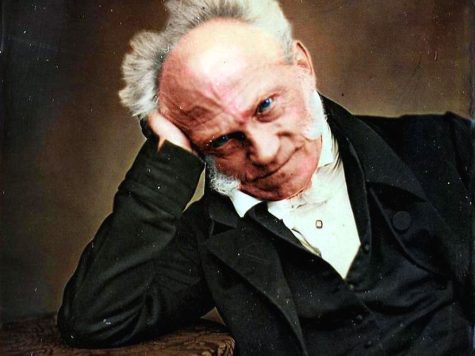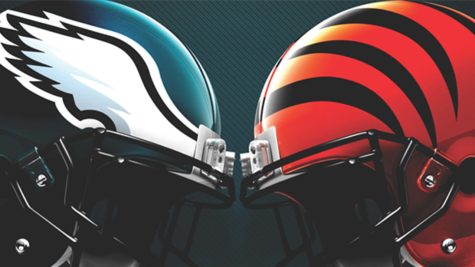The Intersectionality of Black Women
Written for the workshop “Freedom Dreams: Black Radical Thought and Social Movements”

November 19, 2021
“The most disrespected person in America, is the Black woman. The most unprotected person in America is the Black woman. The most neglected person in America is the Black woman.” This Malcolm X quote was originally delivered in 1962, but it still holds true today almost sixty years later. It has been referenced in writings, performances, songs, and countless other forms of media by Black women, because they identify with this quote. It illuminates their struggle. Black women are positioned in quite an extraordinary place in society because they find themselves facing oppression from both systems of white supremacy and patriarchy. And while there are many different movements advocating for the liberation of black people and women, created by Black men and White women respectively, these movements more often than not exclude Black women and neglect the unique issues that they face. This positioning of Black women often creates harmful dynamics within the relationships that are ideally supposed to obtain some level of solidarity and understanding. Black women are often put at odds with their Black male counterparts, in both the home-sphere and social movements and organizations, due to their intersectional nature.
In An End to the Neglect of the Problems of Negro Women, Claudia Jones, a Black woman herself, details the specific issues that Black women face in society, and how their exploitation and struggles should be centered within leftist revolutions like communism or socialism. While this article was written to be published in a communist newspaper, it first specifies individual problems of Black women. Jones writes, “Historically, the Negro woman has been the guardian, the protector, of the Negro family. From the days of the slave traders down to the present, the Negro woman has had the responsibility of caring for the needs of the family, of militantly shielding it from the blows of Jim-Crow insults, of rearing children in an atmosphere of lynch terror, segregation, and police brutality, and of fighting for an education for the children.” Black women, since the days of slavery, have been tasked with the role of protecting the Black family unit from all of the perils that it may face. In a traditional patriarchal sense or from as what some Black theorists refer to as “the white model,” this protector or guardian role would usually belong to men who are typically viewed as heads of the household. But Jones argues that within Black communities it is the opposite. Jones attributes this role of Black women to the institution of slavery, in which the social standings of a mother are what were passed to her children. Jones writes, “the history of the Negro woman shows that the Negro mother under slavery held a key position and played a dominant role in her own family grouping. This was due primarily to two factors: the conditions of slavery, under which marriage as such, was non-existent, and the Negro’s social status was derived from the mother and not the father.” Essentially, if a child is born to an enslaved mother and a free father, that child will still be enslaved even if their parent is not. She is also saying that since marriage amongst enslaved people was legally non-existent, the children born to these invalid marriages were considered to be tied to their mothers not their fathers. So, starting from slavery, the Black family was deeply matriarchal, Black women were the center of the family unit. And while Black women play this role of matriarch and protectors, they also are typically the breadwinners in Black families because of the systems of oppression working against Black men. Jones argues that Black women are forced into these roles of domestic work, where they are often mistreated, exploited and degraded.
Frances Beal, a prominent Black Feminist writer and activist, wrote Double Jeopardy: To Be Black and Female in 1969, roughly 20 years after Claudia Jones. Despite this significant passage of time, the two writings still bear uncanny relation to each other and the struggles of Black women. However, where Claudia Jones discusses the intersectionality of Black women in relation to centering them in class liberation efforts, Frances Beal discusses intersectionality in relation to its direct impact on relationships between Black women and the rest of society essentially. Beal starts off Double Jeopardy: To Be Black and Female with a critique of the inextricable link between racism and capitalism, “the system of capitalism… has attempted by many devious ways and means to destroy the humanity of all people, and particularly the humanity of Black people.” Recognizing this economic exploitation that capitalism perpetrates against Black people is common amongst many Black radical thinkers. Even Dr. King writes in The World House of “racism and its perennial ally—economic exploitation.” Beal however relates this exploitation to the psychological traumas it creates and inevitably disorder within Black families, between Black men and Black women. Beal writes, “Capitalism found it necessary to create a situation where the Black man found it impossible to find meaningful or productive employment. More often than not, he couldn’t find work of any kind.” Beal attributes the creation of this stereotype of Black men to capitalism itself, but she also mentions how neither Black men nor Black women could understand this. Beal even mentions how Black women often bought into this stereotype as well believing that “Black men were shiftless and lazy.” Calling back to Claudia Jones’ point of Black women being the primary breadwinners in their family, these perpetrations created an even greater distinguishment of gender roles in Black families from those of traditional patriarchal White families. However, since these roles of masculinity and femininity are tried in strings of materialism, men not being the breadwinners of a household often felt emasculating for Black men. Beal writes, “certain black men are maintaining that they have been castrated by society but that Black women somehow escaped this persecution and even contributed to this emasculation.” Black women are serving as a scapegoat for the actual perpetrators of these offenses against Black men. This often leads to contempt within the Black family.
This disconnect between Black men and women leaves the home and transcends into the movements. Many Black women involved in these movements for Black liberation often critique them because of the movements conservative or traditional views of gender. Women were often reduced to work expected of women. Robin Kelley discusses this saying, “Black women who spoke publicly and led protests instead of running mimeograph machines were sometimes accused of doing ‘men’s work’ or undermining Black manhood.” The Black men of these movements were all for radical changes of society for almost all aspects of it, but when it came to gender roles, they were largely conservative. Even beyond traditional belief in gender roles Black women were believed to be the cause of the “disorganization” and “pathology” within Black families because most Black families were matriarchal, as discussed earlier. And even when Black male activists addressed both issues of sexism and racism, as author Margo Natalie Crawford writes, they “fail to provide rigorous analysis of the interlocking oppressions affecting Black women.” So while these authors could acknowledge the realities of sexism, they could not address their own and how it affects Black women. This failure to address sexism within the Black community also led some organizations led by Black men, like the Nation of Islam for example, to take stances that opposed things advocated for by White women that would most likely benefit women as a whole. The origins of birth control are nothing short of insidious, the testing and forced sterilizations of Black women were all used to create it. However, the end product, an oral contraceptive, would allow women (even Black women) more control over their own bodies because they possessed control of when or if they had children. The Nation of Islam however viewed birth control as an attack on the Black race as a whole. Kelley says, “members of the Nation of Islam invaded birth control clinics and published articles in Muhammad Speaks accompanied by depictions of birth control pills.” Again, because of a failure to understand the intersectionality of Black women, Black male led organizations opposed something that would allow Black women more autonomy in their own lives.
An important thing to remember when thinking of intersectionality, is that it is not additive. There is no part or aspect of the identity that is more important or outweighs the other. Black women are humans, and as humans their beings are made up of many overlapping and complex characteristics and identifiers. Lisa Bowleg writes, “It is obvious now in retrospect that a truly intersectional question would simply ask the respondent to tell about her experiences without separating each identity.” Black women cannot separate their race from their gender, because all of their experiences involve both. They cannot sacrifice their gender identity for their racial identity, nor their racial identity for their gender identity. Instead of being forced to choose which aspect of themselves should be used in a movement, these movements instead should be building their movements around this intersectionality.
Sources
Beal, Frances M. Double Jeopardy: To Be Black and Female.
Bowleg, Lisa. “When Black + Lesbian + Woman ≠ Black Lesbian Woman: The Methodological Challenges of Qualitative and Quantitative Intersectionality Research.” In Sex Roles. Vol. 59. N.p., 2008.
Crawford, Margo Natalie. “Must Revolution Be a Family Affair?” In Want to Start a Revolution? NYU Press, 2009. Digital file.
Jones, Claudia. “An End to the Neglect of the Problems of Negro Women.” Political Affairs, June 1, 1949.
Kelley, Robin. Freedom Dreams. N.p., 2002.
King, Martin Luther. Where Do We Go from Here: Chaos or Community. N.p., 1967.
X, Malcolm. “Who Taught You to Hate?” Speech presented in Harlem, NY, 1962. Video. Alexander Street. https://video-alexanderstreet-com.ezp-prod1.hul.harvard.edu/watch/malcolm-x-who-taught-you-to-hate-speech-excerpt/cite?context=channel:u-s-civil-rights-movement-1954.











